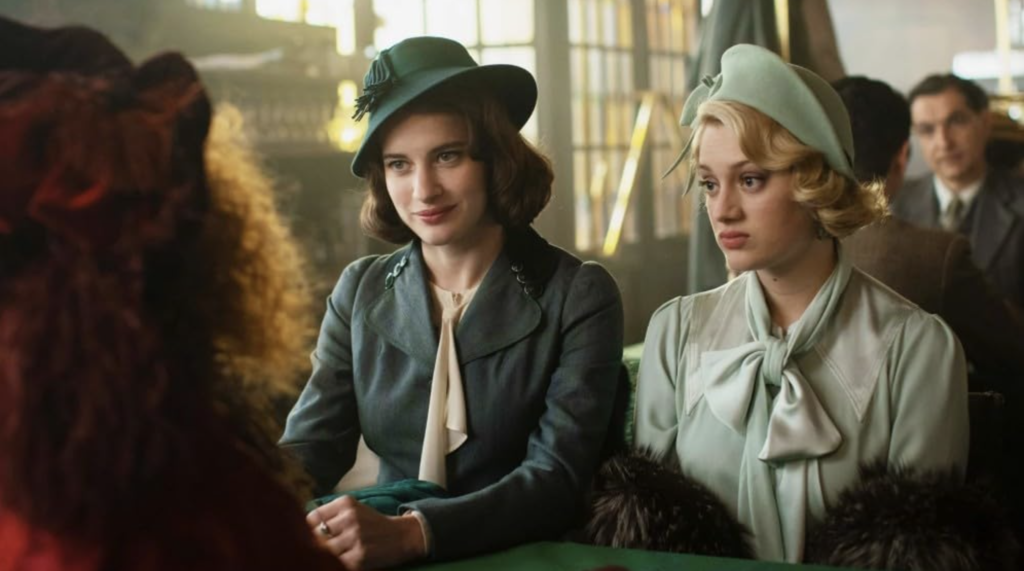
‘The Crime is Mine’ // François Ozon
‘The Crime is Mine’ was side-splitting.
Warning: the following review does contain reference to suicide, sexual assault and adult themes.
A screwball comedy with a feminist edge and an endearing charm, ‘The Crime is Mine’ is a must-see for fans of the eccentrically quirky films of the 30s and 40s. With echoes of ‘The 39 Steps’ and ‘CHICAGO,’ ‘The Crime is Mine’ feels both familiar and fresh. Although set in 1930s Paris, it feels completely relevant and timeless — not to mention side-splittingly hilarious.
“Let’s be sensible and kill ourselves.”
“No, it’s a beautiful day and I have sandwiches.”
“What kind?”
“Ham and butter.”
Loosely based on the 1934 play ‘Mon Crime,’ ‘The Crime is Mine’ is the third screen adaptation, following ‘Cross My Heart’ (1946) and ‘True Confession’ (1937). While details about the leading lady’s love life, name, and profession vary across the films, as does some of the public commentary, the core plot remains consistent. She becomes a vicitim to her employer (or potential employer) who makes sexual advances (assault). She escapes, only to return later and find him murdered. Money has been stolen, and she becomes the prime suspect. Through a series of hilariously reimagined accounts of the murder, a trial ensues. Helen gains notoriety (evoking influencer culture) and is eventually acquitted.
‘The Crime is Mine’ premiered at the Festival Premiers Plans d’Angers in January 2023 and will make its debut on Australian screens in October.
The use of vintage color grading effectively pays homage to the era, breathing life into the scenic designs. Reflecting the theatrical nature of the genre and the story’s origins as a play, backdrops were deliberately eccentric and sometimes comedically flat. A standout scene takes place on a rooftop between Madeleine and her suitor Andre, showcasing endless Parisian chimneys with the Eiffel Tower in the distant background. The film concludes with a play-within-a-play, in which viewers are exposed to the lighting, sound equipment, and artificial set pieces that craft the on-screen universe.
These scenes were further enhanced by captivating extended panning shots, allowing viewers to journey alongside Madeleine.
Another ingenious editing decision involved the use of 4:3 (or similar) framing with a black and white grainy overlay to emphasize reimagined sequences. Whenever the crime’s events were retold — each rendition more outlandish than the previous — this editing technique amplified the comedy.
For the most part, transitions resembled those of modern films, but a classic iris-out effect was employed twice; once as Madeleine signs her confession and again during a passionate kiss with her suitor, underscoring the significance of these moments. Similarly, using closing doors as transitions nodded to the farcical nature of the genre.
Director François Ozon remarked that the film is “ultimately about the triumph of sorority,” and Screen Daily dubbed it “a sly slice of feminist triumph”. And there’s merit to these statements. Not only does the film pass the Bechdel Test, with Madeleine and Pauline engaging in various conversations unrelated to men, but Madeleine’s address to the jury also serves as a potent appeal for society to recognize women’s struggles.
Ozon, hailed as one of the most influential contemporary French filmmakers, showcases in ‘The Crime is Mine’ his impeccable knack for aesthetics, humour, and exploring liminality in cinema.
The film’s pacing was judiciously balanced, mixing elements of slapstick with comedically slowed sequences. During the court scene, both viewers (and the jury) are treated to an extended display of the defendant thumping across the room. It serves little purpose in the plot, but gives viewers a giggle and a reprieve from the often fast paced storytelling in the courtroom.
Nadia Tereszkiewicz’s portrayal of Madeleine Verdier and Rebecca Marder’s performance as Pauline Mauléon were sharp-witted and charismatic, with palpable chemistry between the two.
Verdier’s gleeful reaction to being labeled a “mediocre actress” was a comedic delight. In a scene with Édouard Sulpice’s André Bonnard, when Bonnard inquires, “Why did you spare ME?” Verdier retorts, “I can’t kill everyone,” perfectly capturing the plot’s absurdity.
As is repeated several times (ironically) throughout the film, “You’re killing me!” is a sentiment sure to be shared by viewers dying of laughter throughout.
A humorous but classy exploration of significant issues; ‘The Crime is Mine’ dives headfirst into discussions about suicide, rape, sexuality, power and feminism in a way that never feels overly political or academic. In recent years, Hollywood has been flooded with lecture films that, while focusing on important issues, feel more like a class than a movie. ‘The Crime is Mine’ manages to explore these racy and significant themes through entertainment, not in spite of it.
‘The Crime is Mine’ opens in cinemas across Australia on October 12. For more information visit Palace Cinemas.






